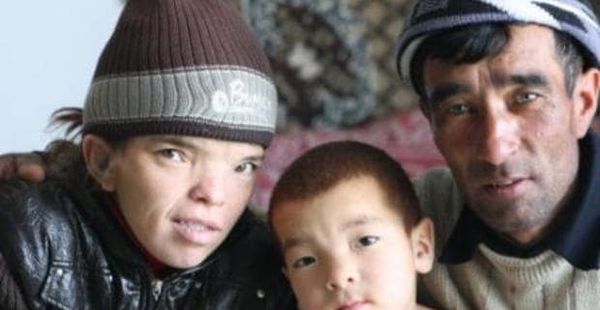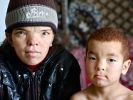Eye For Film >> Movies >> After The Apocalypse (2010) Film Review
After The Apocalypse
Reviewed by: Jennie Kermode

In cinematic terms, nuclear apocalypse has always had a certain appeal. If we think of the human journey as a story, it offers a dramatic possible ending, the chance (so it would seem) to go out with a bang. It's the perfect disaster that must be prevented at all costs, those who might contribute to it the ultimate villains. If we consider it survivable, then we can move on to a genre in which brave bands of survivors try to rebuild civilisation or create something new and better from out of the ashes.
So much for cinematic speculation. In 1949, the Soviets wanted to know what would happen for real. If a nuclear exchange took place between them and America, could they survive it, and what would they need in order to do so? So they set about dropping nuclear bombs. The Americans already had two test subjects, Hiroshima and Nagasaki. The Soviets were not at war, so they dropped bombs on their own people, in Kazakhstan; they knew a real nuclear war would involve more than just two bombs, so they dropped 256.

In 2009, a documentary crew visited the region known as The Polygon, where the tests took place. "We used to watch the bombs fall. We felt them in our bodies. Our mother covered us with thick felt," recounts an elderly peasant woman. When we see her face, the chromosomal damage caused by radiation poisoning is shockingly visible. We meet her daughter, Bibigul, who has clearly inherited this damage. Now Bibigul is pregnant and must decide what to do.
During my career as a film critic I have seen a lot of horror films and documentary depictions of human suffering, and I'm not sure that I have ever seen a film as horrific as this. If it were simply the story of an atrocious crime committed against helpless villagers by a remote government, it would be bad enough, but the real horror here is the set of problems the Kazakhstani community faces today. The Russian government has formally apologised. Special funds have been allocated for support. Ultimately, this means very little. A local obstetrician shows us his collection of mutated babies preserved in formaldehyde. I have seen babies like this in real life; they happen all over the world, for all sorts of reasons, but never with this frequency. Later we tour a ward where babies so misshapen that their parents have abandoned them are cared for by affectionate yet distraught nurses. They are the survivors, and while they're little they remain loveable, but what kind of future will they have? Our elderly heroine tells us that she has been mocked throughout her life because of her deformity.
In the face of this, medical staff who would elsewhere be devoted to assisting with pregnancies focus instead on trying to persuade would-be mothers to abort. Knowing, as they do, the risk of abandonment as well as pain and suffering, they lament that it is not possible for them to force abortions, sterilise afflicted adults, or kill the babies at birth. Frequent references are made to infanticide as practised in ancient Sparta. There is talk of giving people genetic passports, permission to breed. But you don't ask a girl to show you her medical documents before you ask her out on a date, they observe. There are no trained medical ethicists here. Disability of any sort is seen as a burden on society; the mutated are stigmatised, not encouraged to develop what talents they may have. There's also a complete absence of psychological expertise. This creates a gulf between the doctors and the patients. There's frustration and agony on both sides. It's not that Bibigul and others like her are stupid, it's just that they're human, that they want to experience the simple human joy of parenthood. Nobody seems to take this into account. Doctors speak to one another in Russian in the presence of patients who only half understand them. The cultural distance that allowed those bombs to fall remains present.
Up on the mountains, we follow a shepherd. At 45, he considers himself an old man with little left to worry about. He only has five teeth left. He drinks vodka to keep his stomach radiation-free. He enjoys living the traditional Kazakh life in these remote, snowy steppes. But the young, he says, should be afraid. We know now that the inherited problems can persist for at least four generations. Some say they're getting worse.
There are shades here of John Wyndham's classic novel The Chrysalids, as the film crew's quiet observation brings us face to face with questions about what it means to be human, and about what it means to be a monster. "Kazakhstan is not a nuclear country," says a visiting scientist, "And we don't want to be. We don't want this."
Reviewed on: 13 Oct 2010














